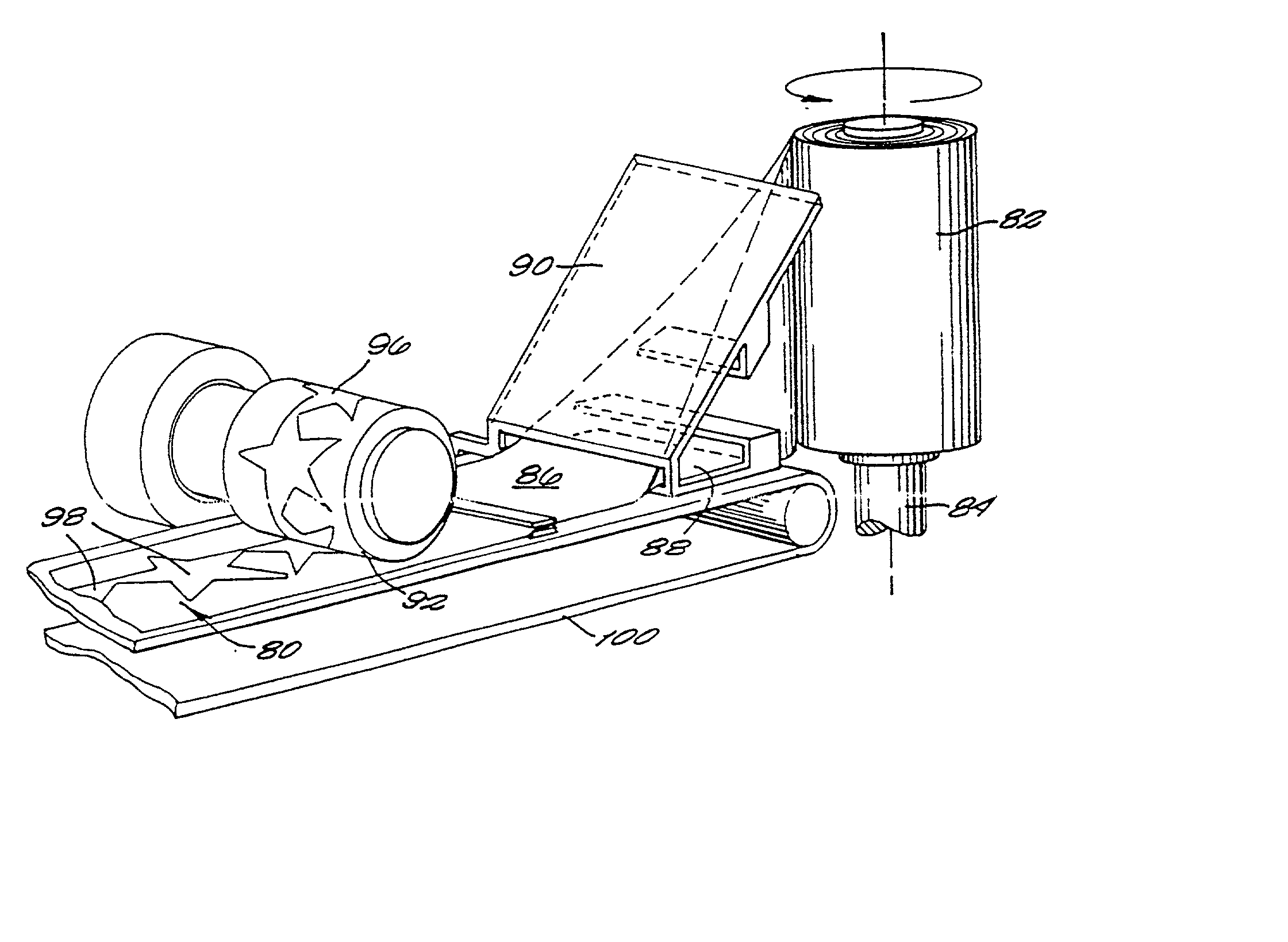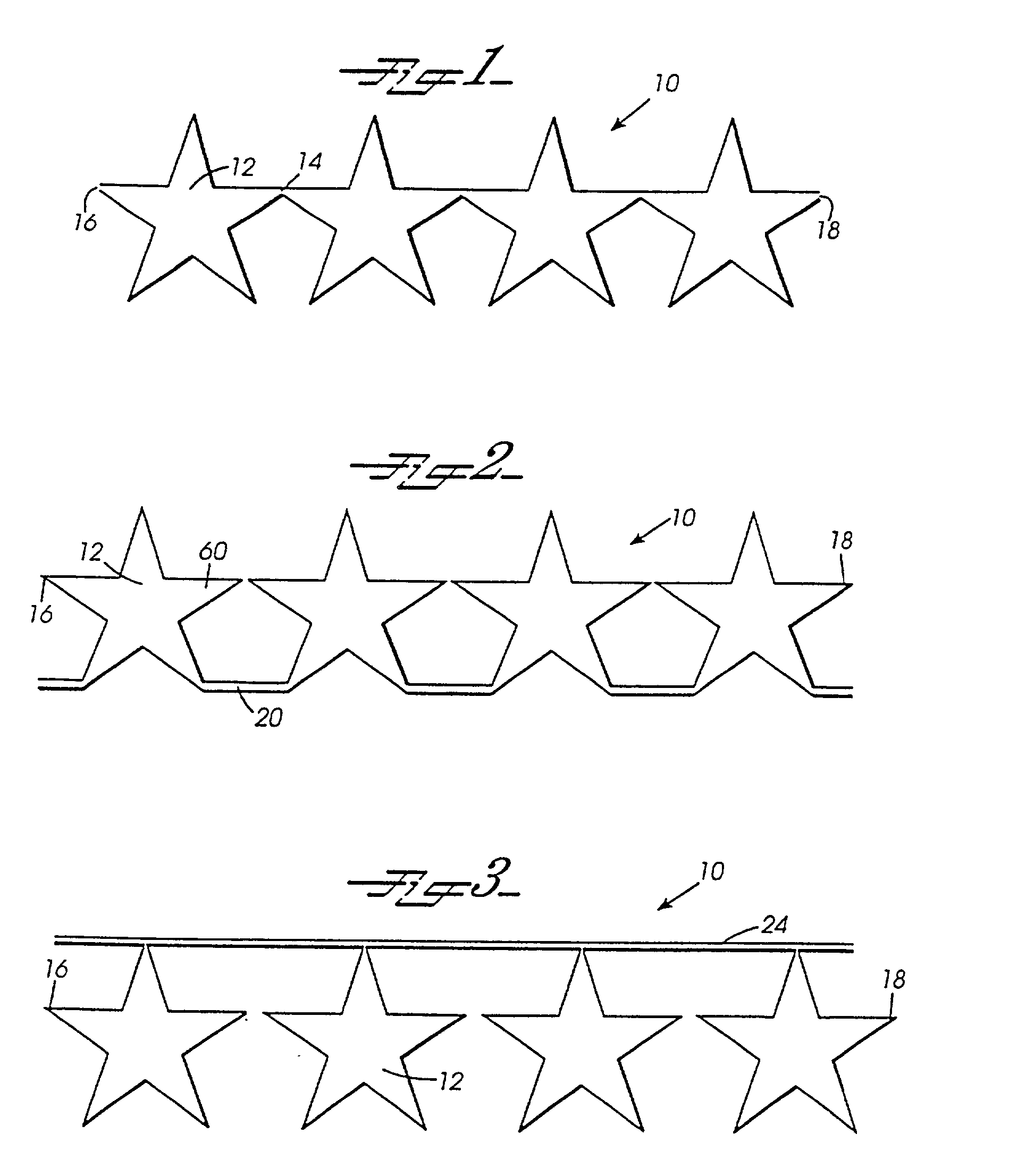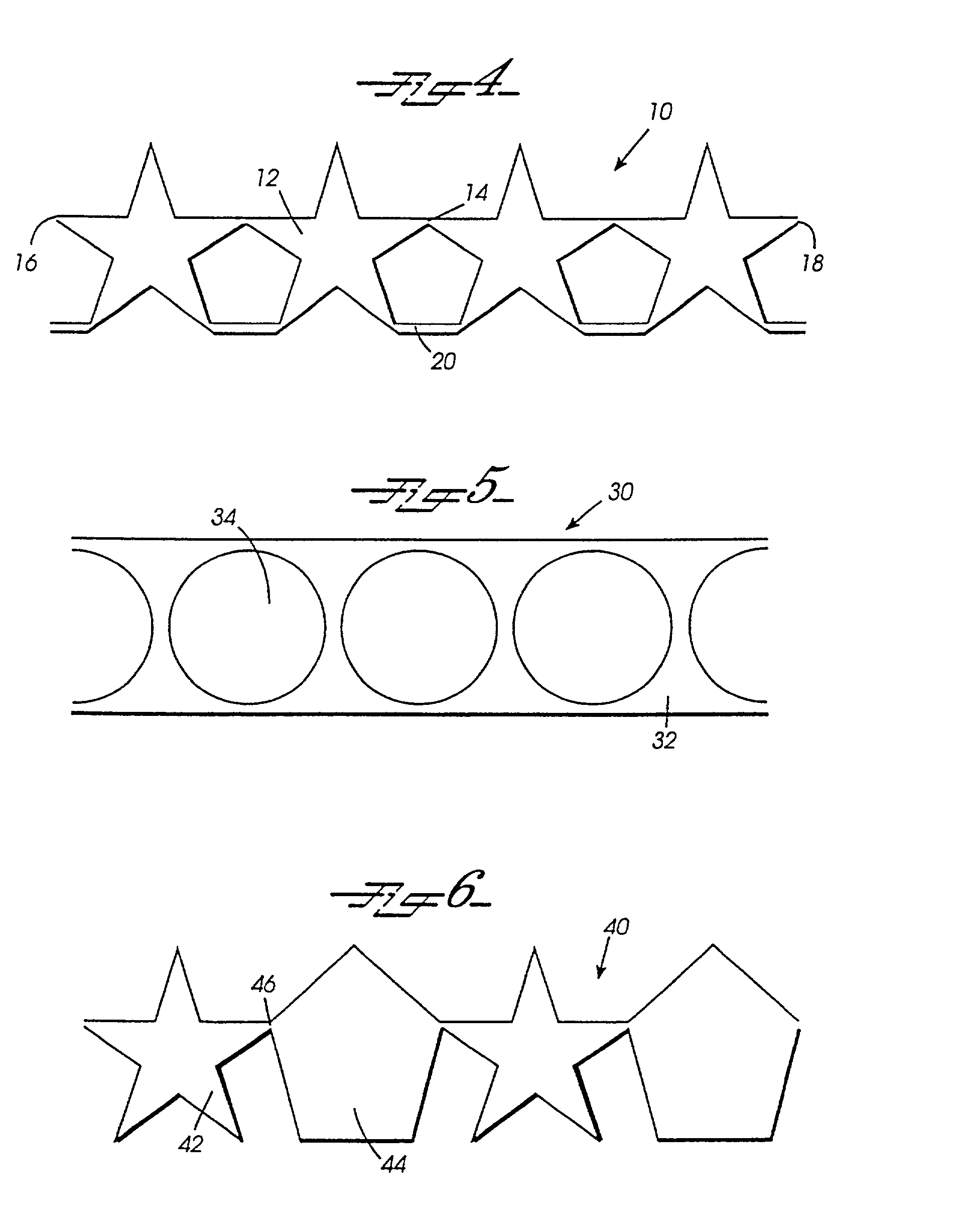Balloon displays
a technology for balloons and displays, applied in the field of balloons, can solve the problems of increasing the cost of making the joints, generating considerable waste, and relatively few systems specially designed and manufactured for these purposes
- Summary
- Abstract
- Description
- Claims
- Application Information
AI Technical Summary
Benefits of technology
Problems solved by technology
Method used
Image
Examples
Embodiment Construction
, "fully expanded aperture" refers to the aperture shape which is created by equal pressures exerted from the center of a cut against the sides of that cut while that cut is surrounded by apertures which share a side, and each of the surrounding apertures has equal pressure exerted from the center of that aperture against its sides. As the space between the ends of adjacent cuts is reduced the two sides affected are shortened. It is not possible to eliminate this space entirely in standard expanded metal grids because the cuts are in a direct line and when the space is 0 all the cuts in a line will touch and the sheet will be cut into strips.
[0124] A "virtual" touching of cuts can, however, be created that allows the effective space between cuts to go to 0 without cutting the sheet into strips. The rows of slits or bands of slits can be viewed as multilane highways rather than single lane paths. As the slits approach each other down the center lane, one or both of them can shift lan...
PUM
 Login to View More
Login to View More Abstract
Description
Claims
Application Information
 Login to View More
Login to View More - R&D
- Intellectual Property
- Life Sciences
- Materials
- Tech Scout
- Unparalleled Data Quality
- Higher Quality Content
- 60% Fewer Hallucinations
Browse by: Latest US Patents, China's latest patents, Technical Efficacy Thesaurus, Application Domain, Technology Topic, Popular Technical Reports.
© 2025 PatSnap. All rights reserved.Legal|Privacy policy|Modern Slavery Act Transparency Statement|Sitemap|About US| Contact US: help@patsnap.com



